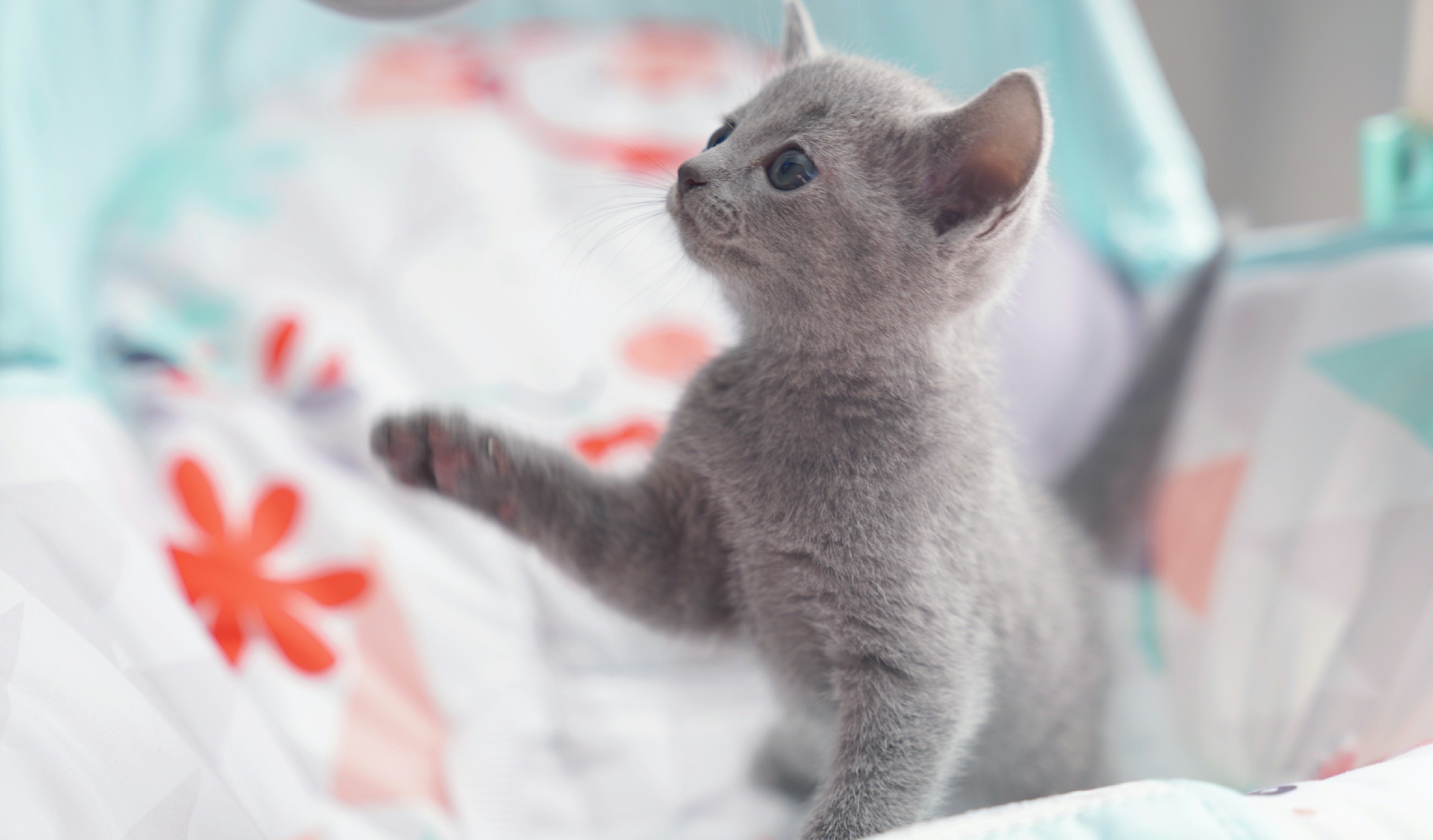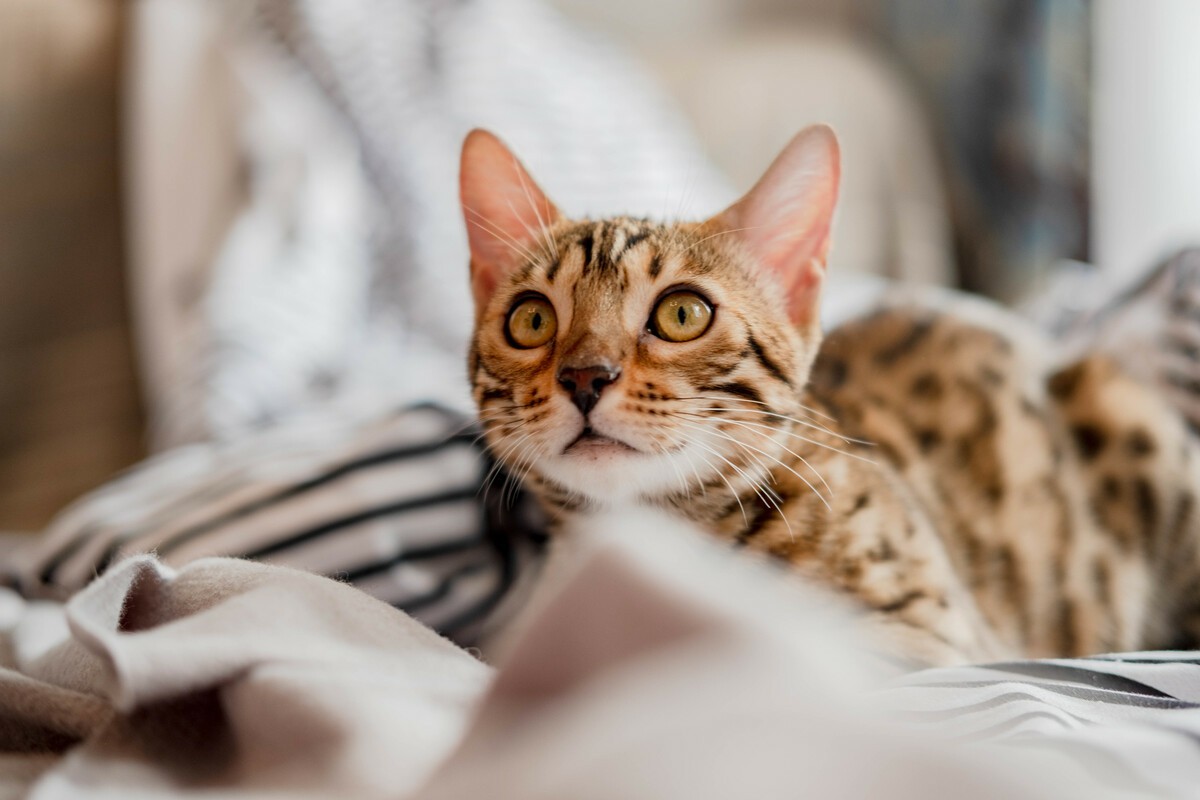It’s always worrying to notice that your Russian blue cat seems to be limping. There are many reasons why a cat might not be able to walk normally, ranging from minor issues that will resolve themselves (such as a pulled muscle or a slight scratch) to more serious problems requiring expert care.
In many cases, there are remedies that will help your Russian blue feel better and have her walking normally again in no time. In this article, we’ll look at causes of lameness in cats and what you can do about it.
Why is my Russian blue limping? Causes of limping in cats include strained muscles, leg or paw injuries, sprains and breaks, conditions such as arthritis, UTIs, and even some cancers. Limping in cats may improve naturally or may require medical attention.
If you’ve found your way to this page, you have questions and concerns about your pet’s health.
- What is causing your Russian blue to limp?
- How can you make sure your pet recovers fully?
- What are some common injuries and conditions in cats?
- How can you protect your Russian blue from similar issues in future?
- To find out the answers to these and more questions, read on.
Limping in cats: what you need to know

Why is my Russian blue limping? There could be several explanations, ranging from minor and self-limiting conditions to more serious problems. If you see your Russian blue limping, inspect her legs, joints and paws for any injuries or swelling. Cats are very good at hiding their injuries from you so do check carefully.
It’s fairly common for cats to sustain slight injuries from jumping and landing awkwardly, stepping on a sharp object or even getting too enthusiastic with their scratching post.
If you have other pets or you allow your Russian blue outside to roam, they may get into fights with other animals and be injured that way. If your Russian blue happens to be a recent rescue, she may come to you with injuries from her previous living situation.
In rare cases, an outdoor cat in a very cold climate may acquire a case of frostbite — normally they’re smart enough to come inside before that happens but it’s a possibility if your kitty got stuck somewhere in bad weather.
A cat may limp if you clip her claws too closely and cut into the quick (the pink part of the nail) so be careful with trimming her nails. Conversely, if you don’t trim your Russian blue’s claws at all, she might develop an ingrown claw which will cause limping and needs to be addressed by a vet.
If you find swellings or any cut more serious than a small scratch, you should ask your vet to examine the injury — your Russian blue may need additional support to recover fully. If you can’t detect any obvious wounds or swelling and your Russian blue seems to be okay otherwise, you can safely wait to see what happens.
Many minor conditions will go away by themselves. A limp that lasts more than few days or so requires investigation, however. Even if you can’t see anything obviously wrong, there’s probably a very good reason your Russian blue is limping and you need to treat the underlying condition.
There are some serious ongoing issues which can manifest in limping, such as arthritis, nerve problems, infections and even certain cancers. It is very important that the root cause is found and treated.
A limping cat is in discomfort and suffering, at the very least, and may benefit from pain management. In the case of conditions such as an abscess or a bone infection, leaving the problem unchecked can turn a minor issue into a major one and may adversely affect your Russian blue’s prognosis.
Early intervention can mean the difference between a full and speedy recovery, and a long, lingering medical issue that may never fully resolve.
Checking for injuries and other physical issues
If you see your Russian blue cat limping, the first step is to give her a quick checkup yourself. If your Russian blue is suffering from pain or discomfort she may be reluctant to allow you to examine the affected limb; be firm but kind, reassuring her and giving her a treat when you’re done.
Examine your Russian blue’s paw pads and in between her toes to see if there are any foreign bodies, cuts or scrapes. Check her claws to see if any are damaged or missing. Gently and carefully run your hands over the leg she is sparing, paying attention to the way it looks and feels.
Check her joints carefully and don’t omit the hip or shoulder — cats sometimes dislocate these joints when jumping or falling. Look at the area where the leg joins her body; a tick or other parasite may get in there and escape notice while causing the animal discomfort. Check the unaffected leg too so you’ll have a baseline for comparison.
As well as obvious bleeding or crookedness, you’re looking for swellings, lumps and bumps, or areas that feel unusually warm to the touch. This heat is a sign of inflammation and can mean that there’s a bone break or an abscess under the fur. Symptoms like this should be brought to the attention of the family vet sooner rather than later as they can deteriorate very rapidly without proper treatment.
An infection can spread to other parts of your pet’s body, while a broken bone may set incorrectly and never really be the same.
You should also check your Russian blue for matted fur, bad odours or any other sign that she’s not grooming herself properly.
This can be a sign that your Russian blue is wrestling with some ongoing issue that’s severely impairing her self-care, and which needs urgent treatment.
Preventing injuries
While you can’t protect your Russian blue from every little hazard, there are many that you can easily avoid. Make sure that sharp objects — tacks, broken glass etc — are very carefully cleaned up if they fall on the floor. Check over any play equipment your Russian blue uses to make sure there are no protruding staples or sharp edges.
The same goes for your furniture. Remember that your Russian blue is walking around barefoot all the time and can easily run afoul of that splintery plywood or protruding nail.
If you have other pets in the house, make sure they and your Russian blue cat are getting along well and don’t leave them unsupervised.
Young children can accidentally injure a cat simply by playing with her; one very common scenario is for a small child to try and carry a large cat, only to trip and fall on top of her. Make sure that any children who spend time with your Russian blue know not to try and grab her, and generally understand that it’s important to “play nicely with the kitty”.
One of the most significant ways you can prevent your Russian blue from being injured, though, is to keep her indoors. Even the quietest neighbourhood has multiple hazards that can cause your Russian blue to be injured or killed.
Motor vehicles, other animals, poorly maintained structures, litter and — sadly — abusive humans can all send your Russian blue home with a limp.
It’s much better to keep her indoors if you possibly can. If you’re concerned about getting your Russian blue sufficient exercise, provide opportunities for indoor play and consider harness training your Russian blue so you can take her for walks.
A word on feline arthritis
Cat owners are sometimes surprised to discover that our furry friends can develop arthritis just like humans. Yes, they can — it’s actually very common. A cat’s joints are structured very much like yours and mine and are prone to similar issues, especially later in life.
Arthritis can be a miserable condition for a cat but it can be managed to minimise her pain. Russian blues aren’t prone to arthritis specifically; what they are prone to, though, is inactivity with attendant weight gain.
This can exacerbate or even cause arthritis by putting extra wear and tear on the joints. This breed tends to produce cats with a fairly sedate character, tending to grow less and less active with the passage of time. This low-activity lifestyle, coupled with a fairly hearty appetite, tends to make Russian blue cats prone to obesity.
You can take steps to reduce the risk of arthritis in later life by monitoring your pet’s middle-age spread and feeding a healthy, balanced diet.
Promoting activity with toys and games is also important. Remember that your Russian blue is a creature of instinct and doesn’t understand concepts like obesity. It’s on you as a responsible pet owner to moderate your Russian blue’s food intake and ensure that she spends some time each day running around and playing.
It can be hard to deny your pet food when she’s fussy but you do need to stick to your guns. your Russian blue will be much happier when her weight is within a healthy range.
Once arthritis develops your Russian blue may fall into a vicious circle; she won’t want to move because it hurts and the pain will be worse because she doesn’t move. Your vet can help here by treating arthritis and setting up a proper pain management plan.




